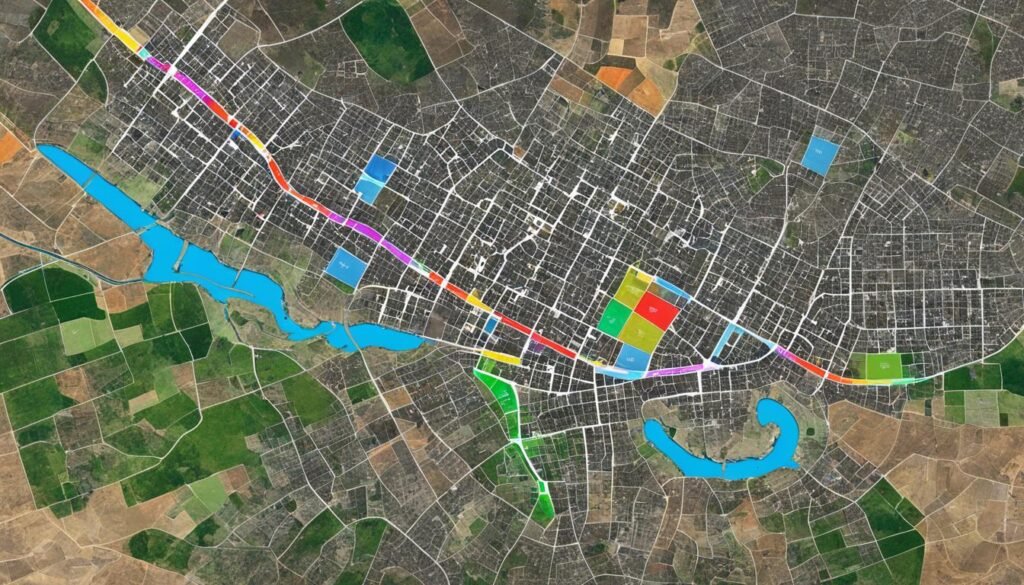Greetings! Today, I would like to shed some light on the intricacies of the California government structure. As residents of the Golden State, it is essential for us to have a clear understanding of how our government operates and the roles it plays in governing our state. By familiarizing ourselves with the California government structure, we can actively participate in the democratic process and hold our elected officials accountable.
The California government is a complex system comprising various departments, agencies, and offices. Each entity works cohesively to provide a wide range of services and implement policies that impact our daily lives. From education and healthcare to public safety and environmental protection, the government plays a vital role in shaping our communities and ensuring our well-being.
To navigate this vast government system effectively, it is important to understand the three branches of the California government: the executive branch, the legislative branch, and the judicial branch. Each branch has distinct powers and responsibilities that contribute to the governance of our state. Now, let’s explore each branch in more detail.
Key Takeaways:
- The California government is composed of various departments, agencies, and offices.
- Understanding the government structure empowers citizens to actively participate in the democratic process.
- The three branches of the California government are the executive, legislative, and judicial branches.
- The government provides a wide range of services, including education, healthcare, transportation, and public safety.
- Public opinion on the government can vary, influenced by factors such as political affiliation and personal experiences.
The Three Branches of the California Government
The California government operates under the principles of separation of powers, which means that its powers and responsibilities are divided among three branches: the executive branch, the legislative branch, and the judicial branch.
The executive branch, headed by the Governor, consists of various state agencies and departments that are responsible for implementing policies and overseeing the daily operations of the government.
The legislative branch, known as the State Legislature, is responsible for making laws and consists of two houses: the Senate and the Assembly. The members of the State Legislature are elected by the citizens of California to represent their interests and pass legislation.
The judicial branch, headed by the California Supreme Court, is responsible for interpreting and applying the law. It ensures that the laws are enforced fairly and impartially and resolves disputes through the court system.
The three branches of the California government work together to ensure checks and balances, preventing any one branch from acquiring too much power. This system promotes transparency, accountability, and democracy in the governance of the state.

Understanding the structure and functions of the three branches of the California government is crucial for citizens to actively participate in the democratic process, hold their elected officials accountable, and contribute to the development and improvement of their state.
Services Provided by the California Government
The California government offers a wide array of services and programs that aim to cater to the needs of its residents. These services encompass essential sectors such as education, healthcare, transportation, public safety, environmental protection, and social welfare.
One of the key priorities of the California government is to provide high-quality education to its citizens. Through a comprehensive network of schools and educational institutions, the government strives to ensure that every student receives a quality education and has access to the necessary resources for their academic development.
The government also prioritizes the health and well-being of its residents by offering various healthcare programs and initiatives. These programs aim to provide affordable and accessible healthcare services, including preventive care, medical assistance, and health insurance options.
In terms of transportation, the California government maintains an extensive infrastructure system that includes roads, highways, public transportation, and airports. This ensures efficient and convenient travel options for residents and facilitates the movement of goods and services throughout the state.
Moreover, the California government is committed to ensuring public safety by maintaining law enforcement agencies, fire departments, and emergency response services. These agencies work diligently to protect the communities and respond to emergencies promptly.
The government also places a significant emphasis on environmental protection and sustainability. Through various initiatives and regulations, the California government strives to preserve natural resources, combat climate change, and promote sustainable practices across different sectors.
Furthermore, the California government administers a range of social welfare programs to support individuals and families in need. These programs include unemployment benefits, housing assistance, food assistance, and financial aid for low-income individuals and families.
To foster economic growth and development, the California government provides resources and support to businesses operating within the state. From small startups to large corporations, businesses can access resources, incentives, and programs that enable them to thrive and contribute to the overall economic health of the state.
Through these various services and programs, the California government endeavors to enhance the quality of life for its residents and create a conducive environment for growth, prosperity, and well-being.

California Government Agencies and Departments
The California government consists of various agencies and departments that play critical roles in delivering essential services to the public. These agencies and departments are responsible for specific functions and work together to ensure the smooth functioning of the government.
Some key agencies within the California government include:
- California Department of Education: Responsible for overseeing and implementing educational policies and programs to support the state’s students and schools.
- California Department of Health Care Services: Ensures access to quality healthcare services for Californians by administering various healthcare programs and initiatives.
- California Department of Transportation: Manages and maintains the state’s transportation infrastructure, including highways, bridges, and public transportation systems.
- California Highway Patrol: Protects and serves the public by enforcing traffic laws, responding to emergencies, and promoting highway safety.
These agencies, among many others, collaborate with different government departments to deliver services that meet the diverse needs of California residents. Whether it’s education, healthcare, transportation, or public safety, the California government agencies and departments work diligently to provide efficient services and support to the public.
Citizens can access valuable information, resources, and services from these government agencies through the official California government website or by visiting government offices located throughout the state.
When it comes to engaging with the government and availing of services, the official California government website is a reliable source of information, enabling citizens to learn more about the agencies and departments and access the resources they need.
Next, let’s delve into the diverse perspectives and opinions that shape public perception of the California government.
Public Opinion on the California Government
Public opinion on the California government can vary, with people holding different views on its effectiveness and the extent to which it serves the needs of the citizens. Some individuals may feel that the government is responsive to their needs and provides essential services, while others may have concerns about government overreach and excessive bureaucracy.
Public opinion can also be influenced by factors such as political affiliation, socioeconomic status, and personal experiences. People’s opinions about the government are shaped by their interactions with government services, the actions of government officials, and the overall state of the economy.
For example, individuals who have had positive experiences with government services may have a favorable opinion of the government and believe that it genuinely cares about its citizens. On the other hand, those who have had negative experiences or perceive government inefficiency may view the government as indifferent or uncaring.
Additionally, people’s political beliefs and ideologies often inform their opinions on the government. Some individuals who advocate for less government intervention may hold a negative view of government involvement in various sectors, while others who believe in the importance of government may have a more positive opinion.
It is essential for citizens to engage in informed discussions and participate in the democratic process to shape the direction of the government. By staying informed about government actions, voicing their concerns, and holding elected officials accountable, individuals have the opportunity to influence public policy and decision-making.
Ultimately, the public opinion on the California government is dynamic and multifaceted, reflecting the diverse perspectives and experiences of its citizens. Engaging in constructive dialogue and actively participating in the democratic process can contribute to a more effective and responsive government that serves the needs of the people.

Role of the California Government in Everyday Life
The California government plays a significant role in the everyday lives of its residents. It is responsible for maintaining public infrastructure, ensuring public safety, protecting the environment, promoting economic growth, and providing critical services.
First and foremost, the government in California is dedicated to maintaining public infrastructure. From roads and bridges to schools and hospitals, the government invests in the development and maintenance of essential facilities that support the daily lives of Californians. By continuously improving and upgrading infrastructure, the government ensures a higher quality of life for its residents.
The government also prioritizes public safety. Through law enforcement agencies and emergency services, it takes measures to protect citizens from harm and maintain order within communities. By implementing comprehensive safety policies and regulations, the government endeavors to create a secure environment where residents can thrive.
Furthermore, the California government is committed to protecting the environment. With the state’s diverse ecosystems and natural resources, the government takes active steps to conserve and sustainably manage its natural wealth. By promoting initiatives such as renewable energy adoption and waste reduction programs, the government strives to preserve the environment for future generations.
In addition to its role in infrastructure, safety, and environmental protection, the government plays a pivotal role in promoting economic growth. Through various initiatives and policies, it supports businesses, fosters innovation, and attracts investment to create job opportunities and stimulate economic prosperity. The government collaborates with local communities and industries to drive economic development and ensure sustainable growth across the state.
The California government also recognizes the importance of providing critical services to its residents. From healthcare and education to social services and public assistance programs, the government aims to meet the diverse needs of its population. By allocating resources and funding, the government ensures that essential services are accessible to all Californians, thus enhancing their overall well-being.
Moreover, the government regulates various aspects of daily life to protect consumers and ensure fair practices. It enforces laws related to education standards, healthcare quality, transportation safety, and consumer rights. By implementing and enforcing regulations, the government safeguards the interests of its residents and promotes a fair and equitable society.
The California government’s operations and programs are primarily funded through tax collections. By collecting taxes from individuals and businesses, the government secures the necessary finances to carry out its responsibilities effectively and efficiently. These funds are allocated towards public services, infrastructure development, and various programs that benefit the community.
Overall, the California government’s positive impact on everyday life is undeniable. It actively participates in maintaining public infrastructure, ensuring public safety, protecting the environment, promoting economic growth, and providing critical services. By creating and enforcing regulations, the government plays a vital role in protecting the rights and well-being of its residents. Citizens can rely on the government to address their needs, promoting a higher quality of life for all Californians.
Conclusion
The California government is a vital component of the state’s governance, responsible for providing essential services, implementing policies, and maintaining public infrastructure. With its complex and multifaceted system, the government of California plays a crucial role in the lives of its residents.
While opinions on the government may vary, active citizen engagement is key to shaping the direction of the government and ensuring that it effectively serves the needs of the public. By staying informed about the latest developments in California government news and actively participating in the democratic process, we can make our voices heard and contribute to a government that works for us.
As we reflect on the power balance between the federal government and the state government of California, it’s important to continue discussing and evaluating whether the federal government holds too much power. Open dialogue and constructive engagement can lead to meaningful changes that address the concerns and needs of our local communities.
Let’s remain informed, engaged, and proactive when it comes to our California government. Together, we can create a government that is accountable, responsive, and responsive to the diverse needs of our state and its residents.
FAQ
What is the structure of the California government?
The California government is structured into three branches: the executive branch, the legislative branch, and the judicial branch.
What are the three branches of the California government responsible for?
The executive branch is responsible for implementing policies and includes state agencies and departments. The legislative branch creates laws, and the judicial branch interprets and applies the law.
What services does the California government provide?
The California government provides services such as education, healthcare, transportation, public safety, environmental protection, and social services. It also administers programs like unemployment benefits and housing assistance.
What are some key agencies and departments in the California government?
Some key agencies and departments include the California Department of Education, the California Department of Health Care Services, the California Department of Transportation, and the California Highway Patrol.
What is public opinion on the California government?
Public opinion varies, with some individuals feeling that the government is responsive and provides essential services, while others have concerns about government overreach and bureaucracy.
What is the role of the California government in everyday life?
The California government plays a significant role in maintaining public infrastructure, ensuring public safety, protecting the environment, promoting economic growth, and providing critical services.
Why is citizen engagement important in the California government?
Citizen engagement is crucial to shape the direction of the government and ensure that it effectively serves the needs of the public.







